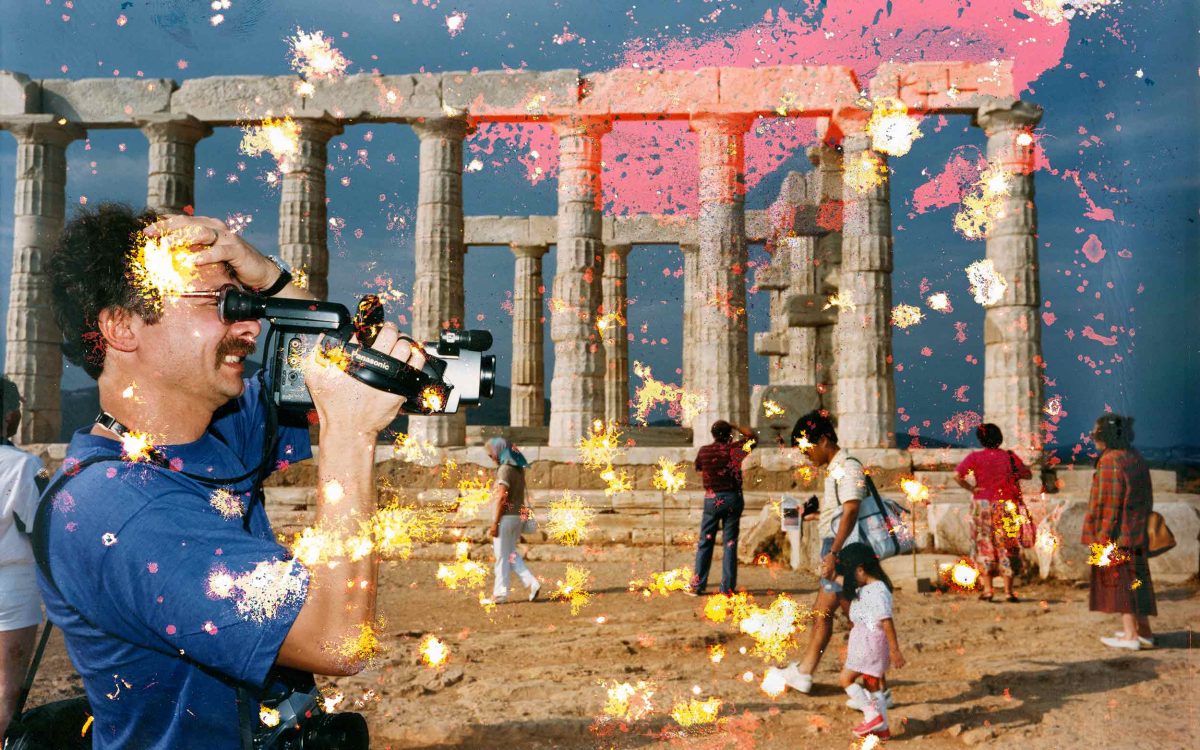In 1991, British documentary photographer and photojournalist Martin Parr visited Athens on a journey for his book “Small World,” documenting global tourism and tourists’ hunt for authentic cultural experiences (which paradoxically, yet naturally, cease to exist once they get there). In focus during his visit was, of course, Greece’s most famous tourist attraction, the Acropolis of Athens. However, due to an unexpected event, the photographs ended up not being included in the book.
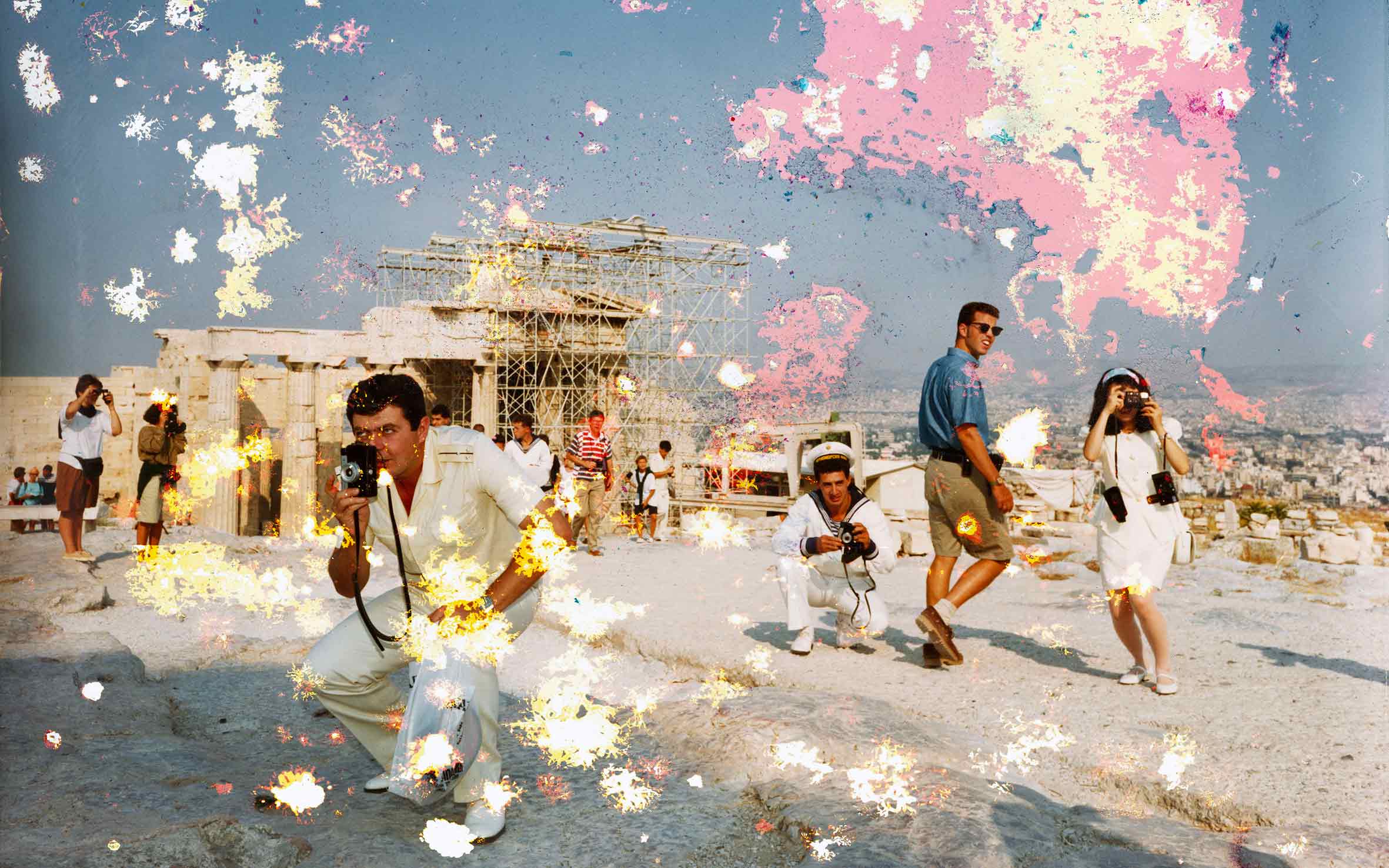
© Martin Parr
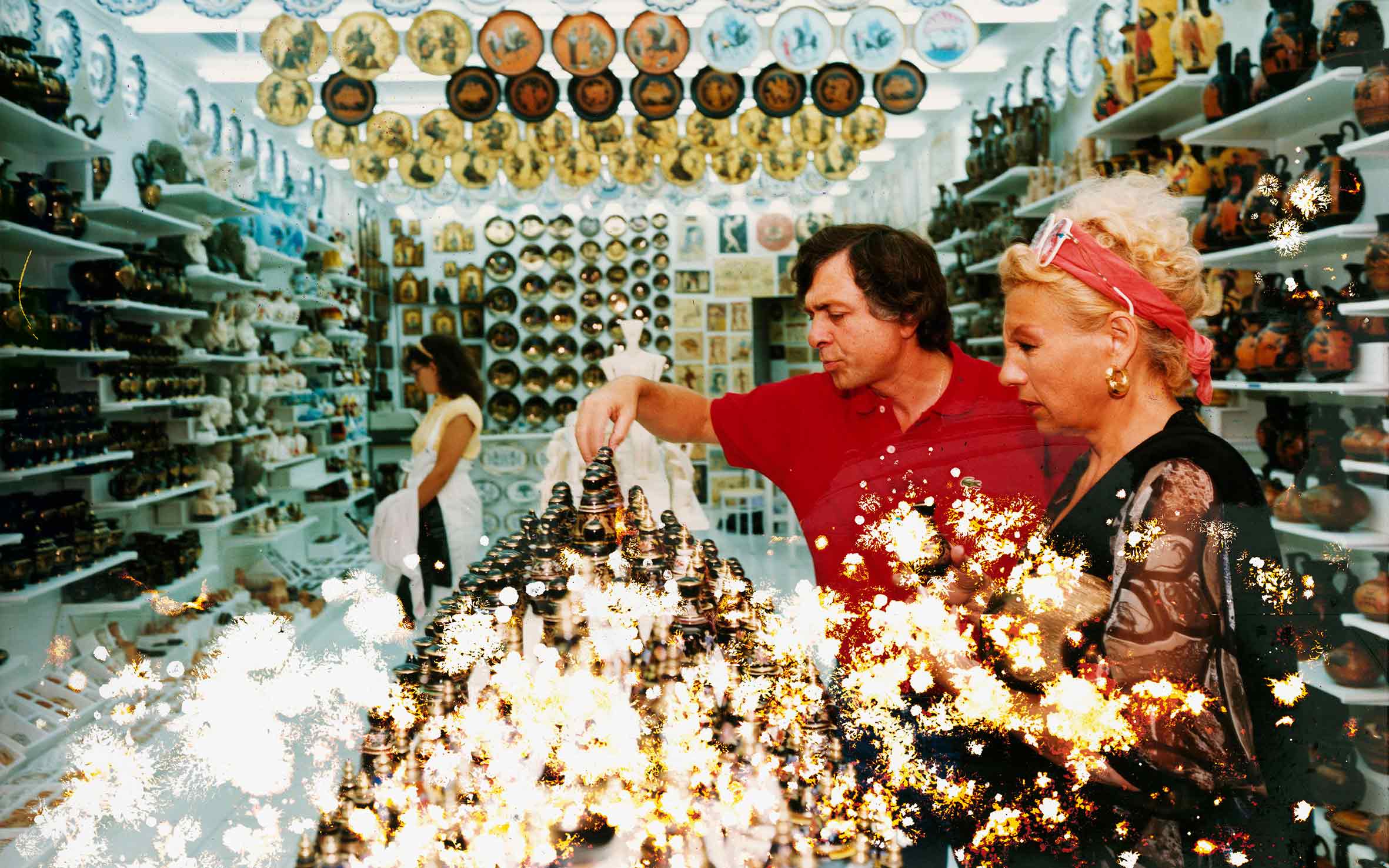
© Martin Parr
Back at home, the photos taken by Parr at the Acropolis were damaged by a water leak in his office.
It wasn’t until years later, when he came across the box of destroyed photos again, that he realized something: the water damage they had suffered revealed new shapes and colors, transforming them into something a lot more complex than simply portrayals of the physical reality. “In fact,” he says, “to be brutally honest they were better than the originals.” Intrigued by what he now saw in them, he decided to publish the photos in a new book titled “Acropolis Now.”
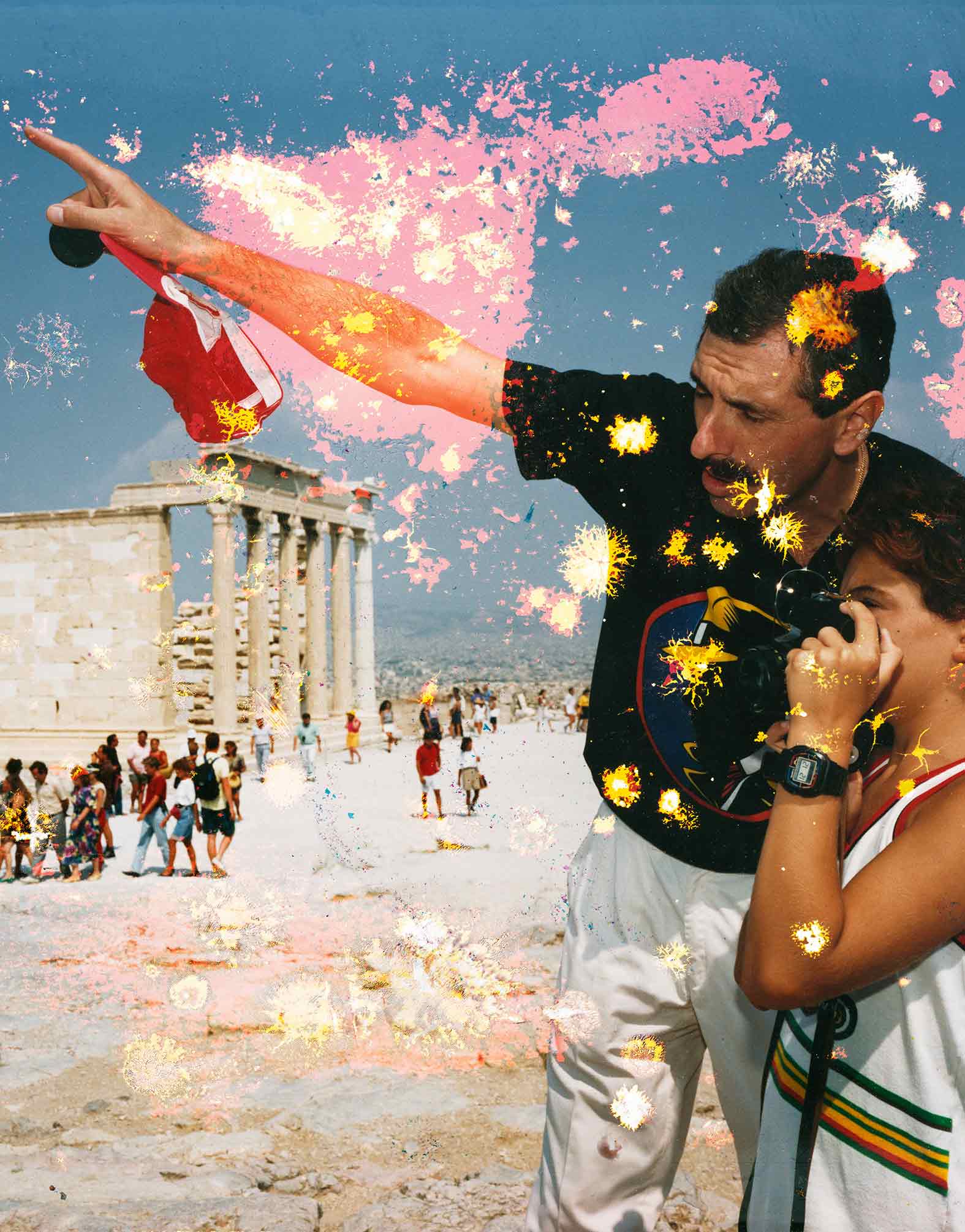
© Martin Parr
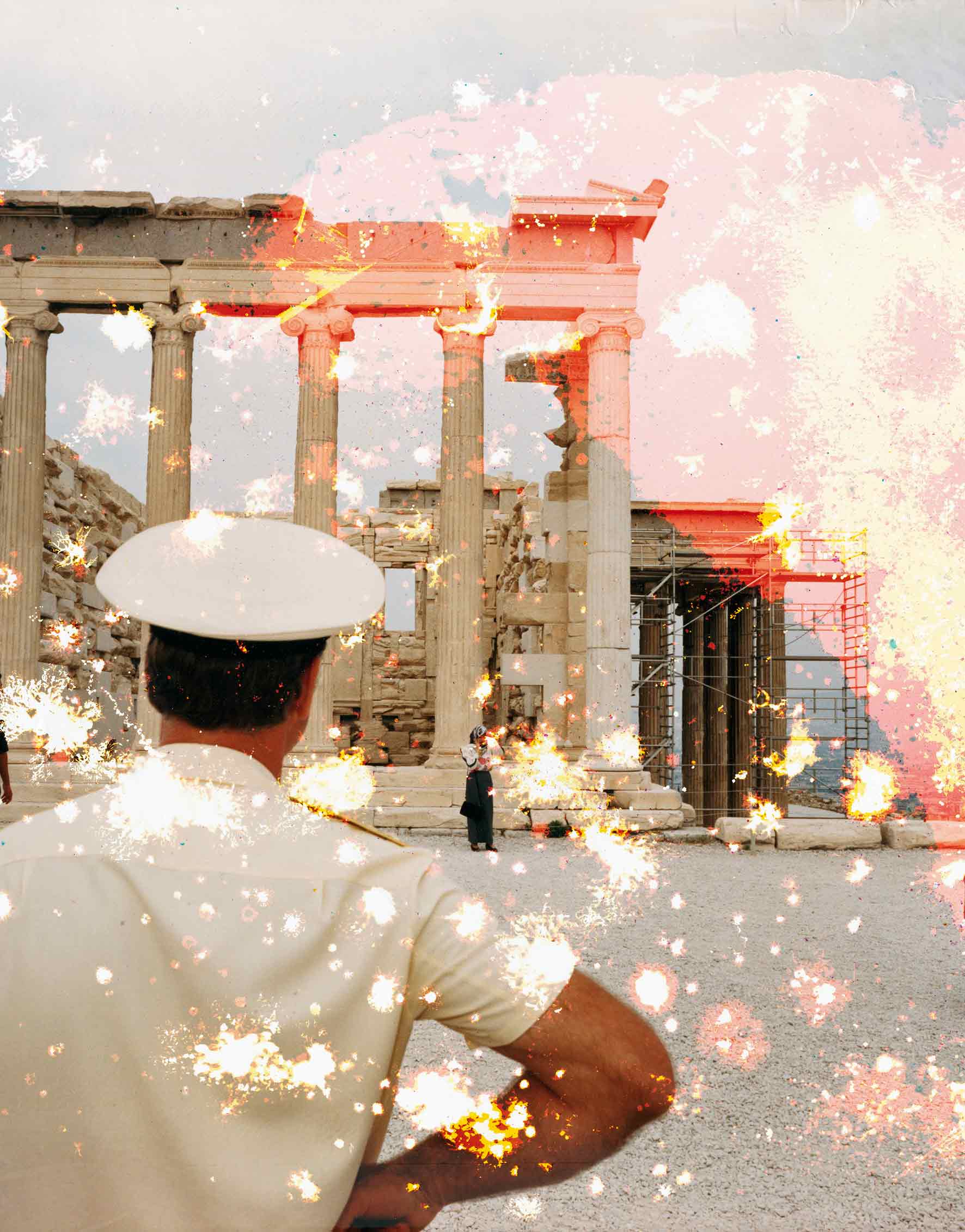
© Martin Parr
Known for taking bold decisions with his images, which often feature strong colors and unusual perspectives, it isn’t too surprising that he would realize the beauty in the bright speckles on the photos from the Acropolis. They resemble sparks and fireworks, glitter and confetti, fitting quite well with the theme of a commercialized landmark. They also make each scene look magical.
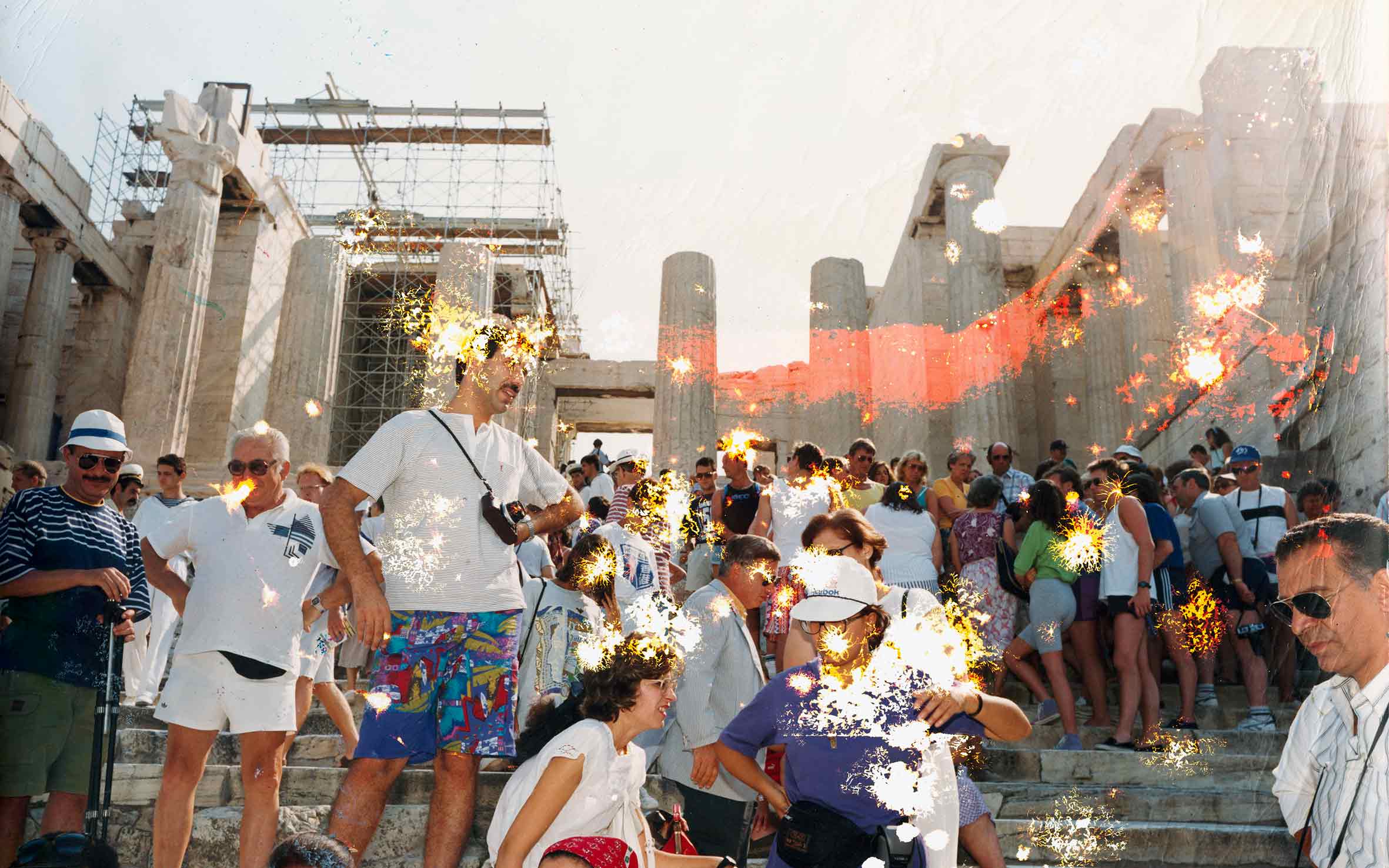
© Martin Parr
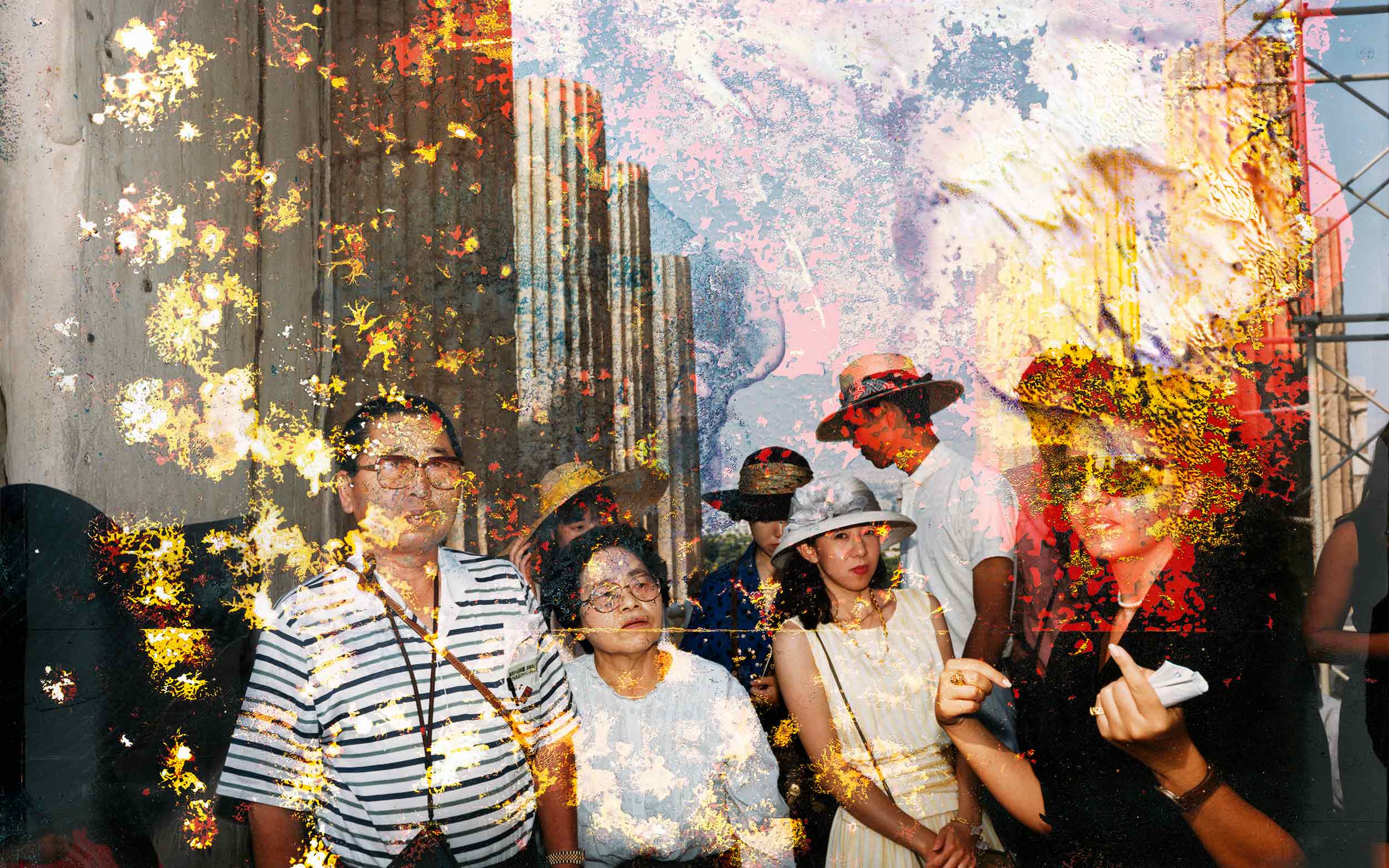
© Martin Parr
“Acropolis Now,” published by Setanta Books, is a lot more than a regular travel photo book. It’s a documentation of a moment in time for tourism and a story of serendipity. Interpret it, if you like, as a reflection on overtourism, or on how art traveling from the Parthenon to the UK and suffering water damage, might actually get a happy ending. Or just appreciate it for what it definitely is: truly beautiful photography. Either way, it makes for a wonderful gift this holiday season (buy here).
“I firmly believe that the photo book is still an underestimated asset in the cultural history of photography. Speaking as a photographer it is the one vehicle for photography that has influenced, not just me, but many photographers in a very big way.” – Martin Parr

